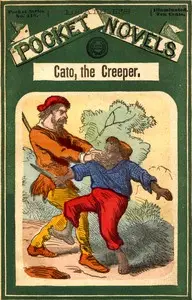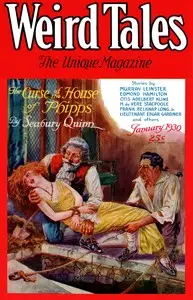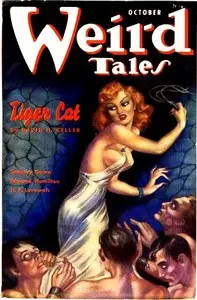"Tiger Cat" by David H. Keller is a suspenseful horror story where a picturesque villa in Italy masks a sinister past. Intrigued by the villa's beauty and captivating view, a new owner soon learns of the dark secrets it holds, linked to the enigmatic Donna Marchesi. He discovers a hidden cellar and a horrifying cavern where previous owners, now blind, are imprisoned, victims of the Donna's deceitful charm. The protagonist must face the shocking reasons behind the Donna's actions and the dreadful fate awaiting anyone who falls for her villa's allure. The tale uses suspense and vivid imagery to explore themes of curiosity, lies, and the monstrous nature that can be hidden beneath an enchanting exterior.

Tiger Cat
By David H. (David Henry) Keller
Enticed by a villa's beauty, a man uncovers a ghastly secret: a dungeon of blind prisoners and a woman whose charm masks a terrifying evil.
Summary
About the AuthorDavid Henry Keller was an American writer who worked for pulp magazines in the mid-twentieth century, in the science fiction, fantasy, and horror genres. He was also a psychiatrist and physician to shell-shocked soldiers during World War I and World War II, and his experience treating mentally ill people is evident in some of his writing, which contains references to mental disorders. He initially wrote short stories as a hobby and published his first science fiction story in Amazing Stories in 1928. He continued to work as a psychiatrist while publishing over sixty short stories in science fiction and horror genres. Technically, his stories were not well-written, but focused on the emotional aspects of imaginative situations, which was unusual for stories at the time.
David Henry Keller was an American writer who worked for pulp magazines in the mid-twentieth century, in the science fiction, fantasy, and horror genres. He was also a psychiatrist and physician to shell-shocked soldiers during World War I and World War II, and his experience treating mentally ill people is evident in some of his writing, which contains references to mental disorders. He initially wrote short stories as a hobby and published his first science fiction story in Amazing Stories in 1928. He continued to work as a psychiatrist while publishing over sixty short stories in science fiction and horror genres. Technically, his stories were not well-written, but focused on the emotional aspects of imaginative situations, which was unusual for stories at the time.









